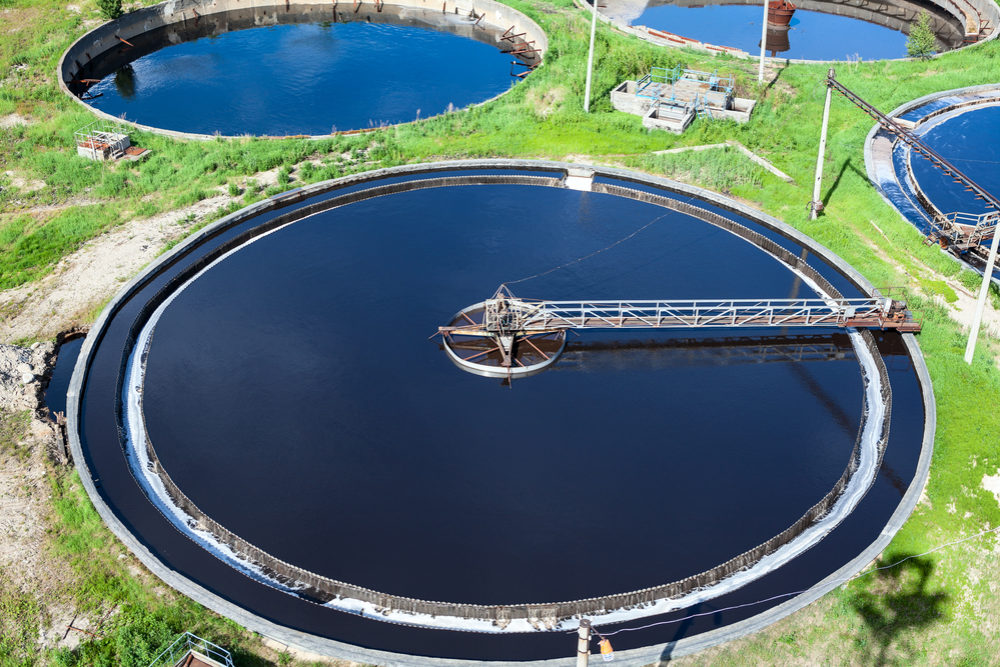Fracking Wastewater Treatments Still Leave Harmful Materials: Study

The contaminants from fracking fluid wastewater are too much for most wastetwater treatment plants to handle, according to the findings of new research that may suggests the process may allow potentially harmful chemicals to end up in downstream drinking water.
In a study published this month in the American Chemical Society’s Environmental Science & Technology journal, researchers warn about potentially serious risks to public health linked to the disposal of fluids from a controversial gas mining process known as hydraulic fracturing, or “fracking”.
Hydraulic fracturing involves the injection of a mixture of water, sand and fluids, which that the gas industry has fought to keep secret, into the ground at extremely high pressure, cracking shale deposits and freeing trapped natural gas, which can then be removed. Those fluids are then sucked from the ground and often disposed of in wastewater wells.

Did You Know?
Millions of Philips CPAP Machines Recalled
Philips DreamStation, CPAP and BiPAP machines sold in recent years may pose a risk of cancer, lung damage and other injuries.
Learn MoreFracking has come under increasing scrutiny over the last several years, as it has become an increasingly popular method of gas extraction with the development of new drilling techniques and the discovery of large shale reserves throughout the eastern seaboard. It first began to boom in Wyoming and Montana’s Powder River Basin region, but now it has spread across the east coast in thousands of well sites in New York, Pennsylvania and Maryland.
“The disposal and leaks of hydraulic fracturing wastewater (HFW) to the environment pose human health risks,” wrote researchers from Stanford and Duke universities. “Since HFW is typically characterized by elevated salinity, concerns have been raised whether the high bromide and iodide in HFW may promote the formation of disinfection byproducts (DBPs) and alter their speciation to more toxic brominated and iodinated analogues.”
In the latest study, researchers took diluted river-water samples of fracking wastewater from wells in Pennsylvania and Arkansas. They used currently accepted drinking water treatment methods and found that even at very low concentrations of fracking wastewater in a larger body of water, DBPs formed.
Disinfection Byproduct Health Risks
DBPs occur as a reaction between organic and inorganic matter in water when you add chemical treatments, like chlorine, to disinfect it. While the water is cleared of microbial contaminants, the chemical reaction between the disinfectants and other things in the water leads to the creation of new chemical compounds, some of which can be harmful to humans.
When using chlorine, the most common water disinfectant, DPBs can include a variety of what are known as halides, like trihalomethanes, haloacetic acides (HAAs), and chlorite.
Wastewater treatment plants are known to have a problem removing halides from water. DPBs have been linked to increased risk of bladder cancer, and a number of birth defects and early-term miscarriages.
A study published earlier this month in the science journal Environmental Health Perspectives found that pregnant women living near fracking wells are more likely to give birth to children suffering from birth defects.
Researchers in the latest study warned that either hydraulic fracturing wastewater should never be released into surface waters, or special techniques will be needed to remove harmful DBPs.
Hydrofracking Safety Concerns
There are a number of other environmental concerns surrounding the fracking process. Residents near hydraulic fracturing sites have reported air pollution, dust problems, and claim that the fracking fluids contain pollutants that contaminate groundwater.
More recently, a number of studies have shown that there may be a link between fracking and earthquakes, suggesting that the intense pressure from the unidentified fluids can cause ground tremors violent enough to damage property and cause injuries and possibly deaths.
Earlier this year, Texas jury awarded $2.9 million in damages to a family who sued a hydraulic fracturing company for being a public nuisance. According allegations raised in a fracking lawsuit filed by the Parr family, nearly two dozen wells near their property caused a private nuisance, exposing them to toxic chemicals that damaged their health and lowered property value.
Environmentalists, a number of lawmakers, local communities and consumer advocacy groups have expressed concerns for years that hydrofracking presents a threat to groundwater supplies and the environment.
Get more articles like this sent directly to your inbox.
"*" indicates required fields




0 Comments